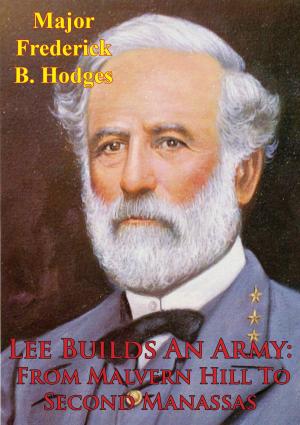Staff Ride Handbook For The Battle Of Perryville, 8 October 1862 [Illustrated Edition]
Nonfiction, History, Modern, 19th Century, Americas, United States, Civil War Period (1850-1877), Military| Author: | Dr. Robert S. Cameron | ISBN: | 9781782895312 |
| Publisher: | Golden Springs Publishing | Publication: | August 15, 2014 |
| Imprint: | Golden Springs Publishing | Language: | English |
| Author: | Dr. Robert S. Cameron |
| ISBN: | 9781782895312 |
| Publisher: | Golden Springs Publishing |
| Publication: | August 15, 2014 |
| Imprint: | Golden Springs Publishing |
| Language: | English |
Illustrated with 9 figures and 11 maps of the campaign and engagements at Perryville.
The battle of Perryville symbolized the high-water mark of the Confederacy in the western theater of operations. In Aug. 1862 General Braxton Bragg and Major General (MG) Edmund Kirby Smith led separate armies into Kentucky to wrest the state from the Union and install a Confederate governor. They initially met success and captured the state capital, simultaneously shifting the war in the west from northern Mississippi and Alabama to Kentucky. In response the North raised additional forces to protect Cincinnati and Louisville while MG Don Carlos Buell halted his offensive against Chattanooga and marched his Army of the Ohio back to Kentucky. On 8 Oct. 1862 Buell’s army clashed with Bragg’s at Perryville. The Confederates achieved a tactical success in a hard-fought engagement that generated more than 7,000 casualties. Of the regiments engaged, 10 suffered losses between 40 and 60 percent. However, outnumbered by three to one, Bragg’s army could not sustain its victory and withdrew. Within days of the battle, all of the invading Southern forces retired from the state. Kentucky remained firmly in the Union and secure from Confederate invasion for the war’s duration.
Despite its importance to the course of the war in the west, Perryville does not benefit from the high visibility accorded the better-known Civil War sites such as Manassas, Gettysburg, Antietam, and Chickamauga. Although more than 70,000 Union and Confederate soldiers deployed in and around Perryville, understanding of the battle and its significance to the overall course of the war remains poor. For staff ride purposes this unfamiliarity can be a benefit. It forces the participants to study and think about the situation facing their Civil War counterparts without the preconceived notions that surround the more popular sites.
Illustrated with 9 figures and 11 maps of the campaign and engagements at Perryville.
The battle of Perryville symbolized the high-water mark of the Confederacy in the western theater of operations. In Aug. 1862 General Braxton Bragg and Major General (MG) Edmund Kirby Smith led separate armies into Kentucky to wrest the state from the Union and install a Confederate governor. They initially met success and captured the state capital, simultaneously shifting the war in the west from northern Mississippi and Alabama to Kentucky. In response the North raised additional forces to protect Cincinnati and Louisville while MG Don Carlos Buell halted his offensive against Chattanooga and marched his Army of the Ohio back to Kentucky. On 8 Oct. 1862 Buell’s army clashed with Bragg’s at Perryville. The Confederates achieved a tactical success in a hard-fought engagement that generated more than 7,000 casualties. Of the regiments engaged, 10 suffered losses between 40 and 60 percent. However, outnumbered by three to one, Bragg’s army could not sustain its victory and withdrew. Within days of the battle, all of the invading Southern forces retired from the state. Kentucky remained firmly in the Union and secure from Confederate invasion for the war’s duration.
Despite its importance to the course of the war in the west, Perryville does not benefit from the high visibility accorded the better-known Civil War sites such as Manassas, Gettysburg, Antietam, and Chickamauga. Although more than 70,000 Union and Confederate soldiers deployed in and around Perryville, understanding of the battle and its significance to the overall course of the war remains poor. For staff ride purposes this unfamiliarity can be a benefit. It forces the participants to study and think about the situation facing their Civil War counterparts without the preconceived notions that surround the more popular sites.
![Cover of the book Staff Ride Handbook For The Battle Of Perryville, 8 October 1862 [Illustrated Edition] by Dr. Robert S. Cameron, Golden Springs Publishing](https://www.kuoky.com/images/2014/august/500x500/9781782895312-4tZA_500x.jpg)










![Cover of the book The Civil War In The Western Theater 1862 [Illustrated Edition] by Dr. Robert S. Cameron](https://www.kuoky.com/images/2015/november/300x300/9781786254337-ymNQ_300x.jpg)



